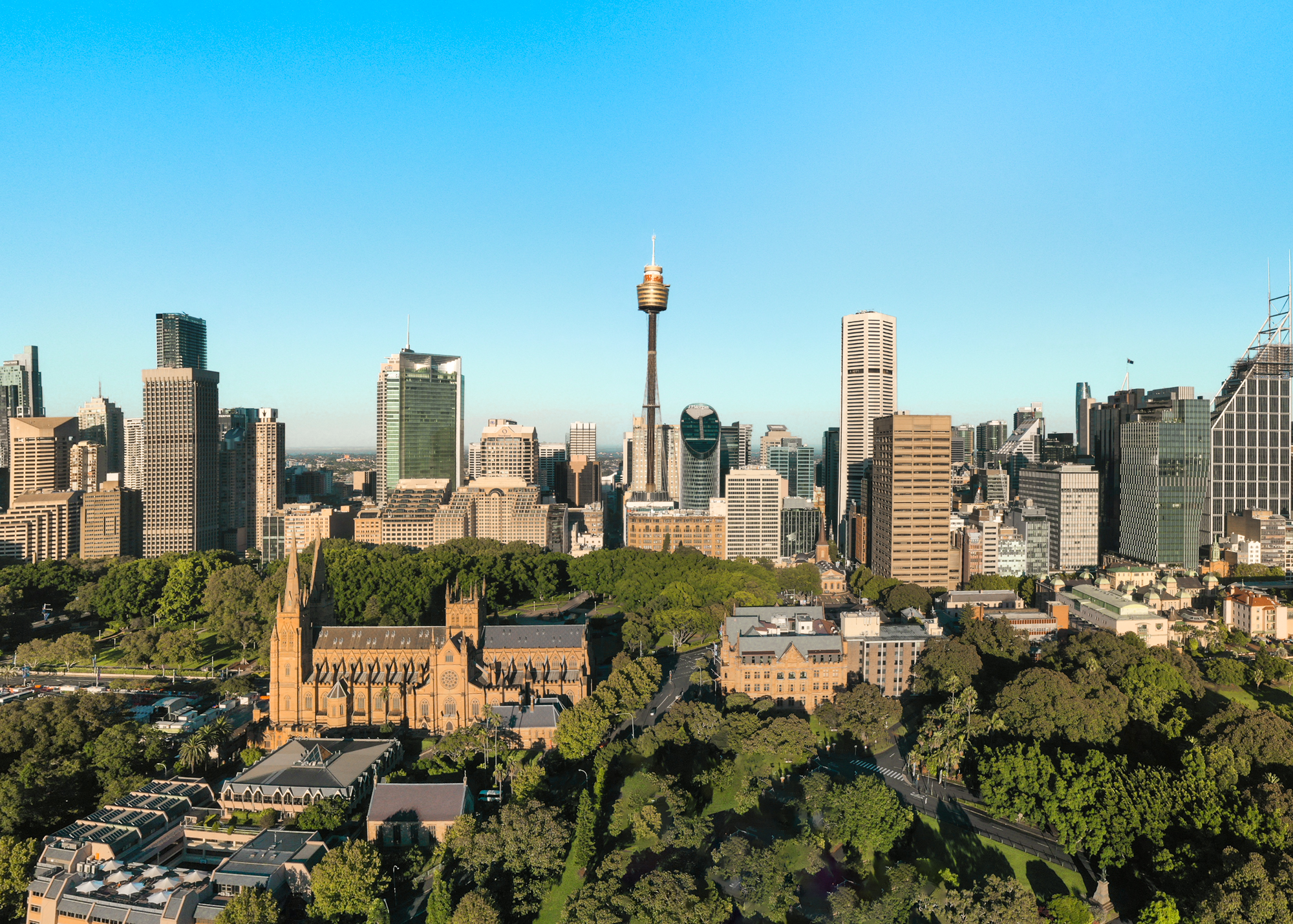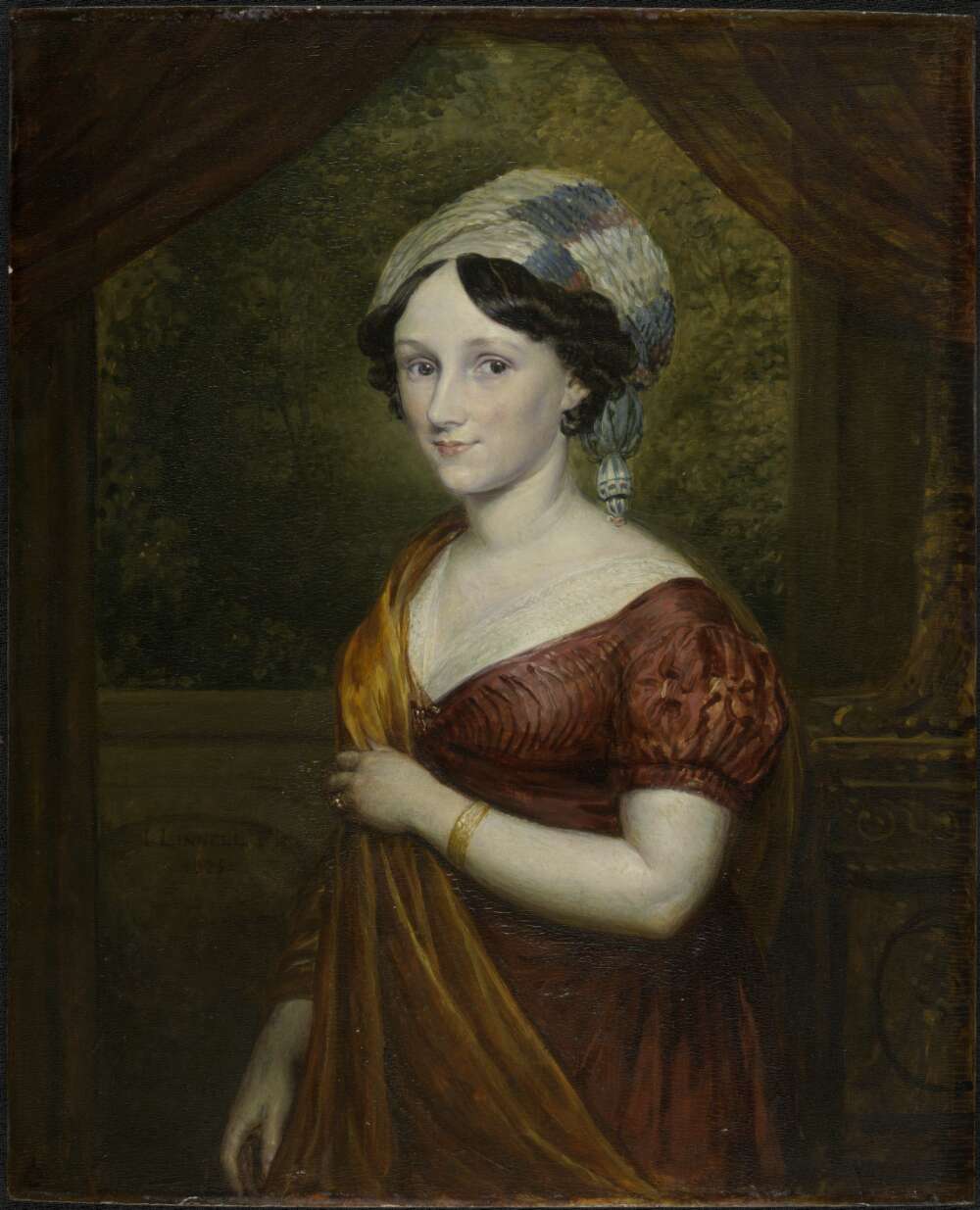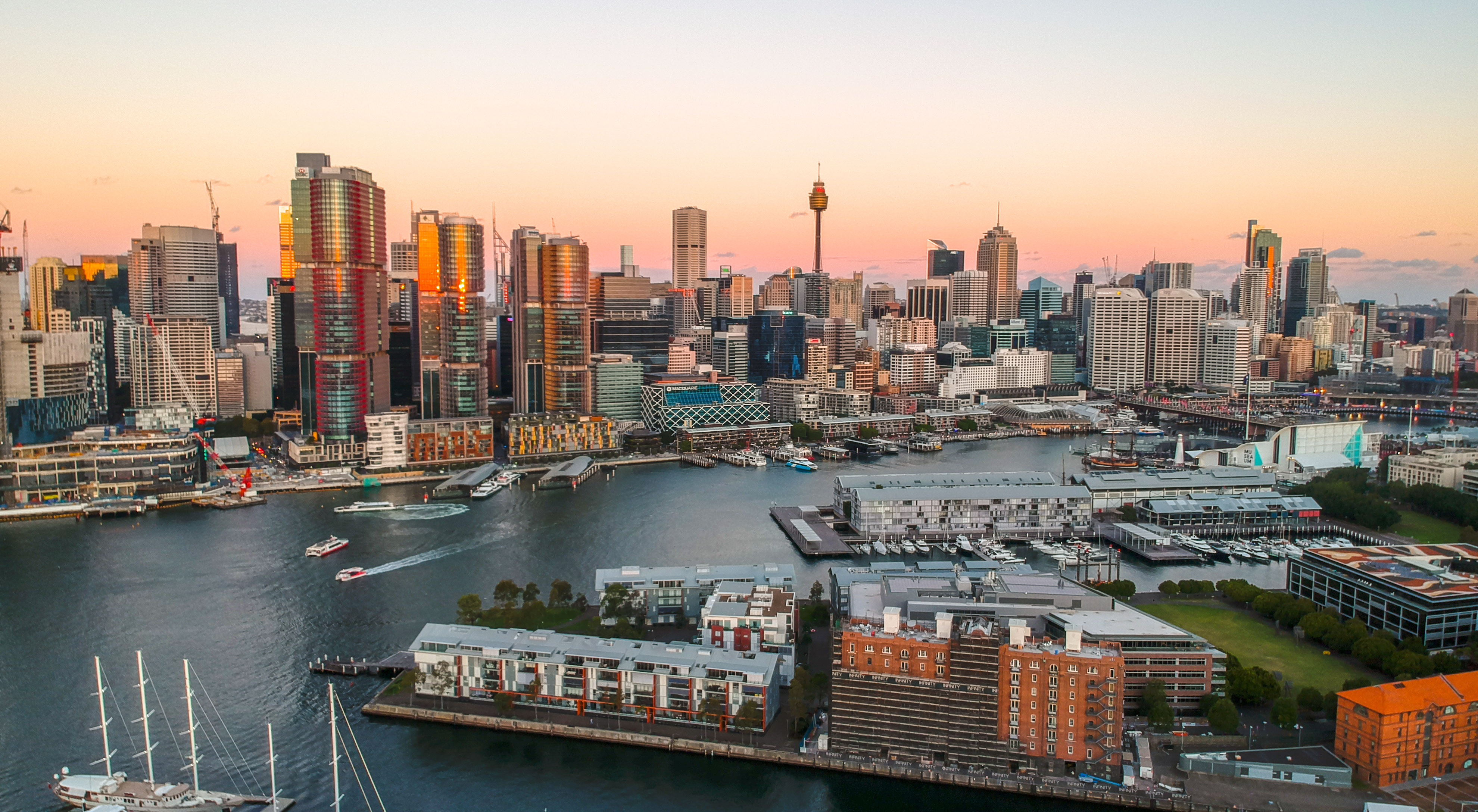|
The Judges House
The Judges House is a heritage-listed former gentleman's villa residence and homeless shelter and now corporates offices and restaurant located at 529 - 531 Kent Street, in the Sydney central business district, in the City of Sydney local government area of New South Wales, Australia. Its design is attributed to William Harper. The property has been sub-divided. The lot on which the main structure of the Judges House stands is numbered 531, while number 529 contains the Japanese-influenced modern addition to the back of the property together with sections of the former garden. The modern addition was previously the Suntory Restaurant and now houses Tetsuya's restaurant. The property is privately owned. It was added to the New South Wales State Heritage Register on 2 April 1999. History The Judges House was built and most probably designed by William Harper and constructed in 1827. It is historically significant because it represents the oldest building in the City area that ... [...More Info...] [...Related Items...] OR: [Wikipedia] [Google] [Baidu] |
Sydney Central Business District
The Sydney central business district (CBD) is the historical and main Central business district, commercial centre of Sydney. The CBD is Sydney's city centre, or Sydney City, and the two terms are used interchangeably. Colloquially, the CBD or city centre is often referred to simply as "Town" or "the City". The Sydney city centre extends southwards for about from Sydney Cove, the point of first European settlement in which the Regions of Sydney, Sydney region was initially established. Due to its pivotal role in Australia's early history, it is one of the oldest established areas in the country. Geographically, its north–south axis runs from Circular Quay in the north to Central railway station, Sydney, Central railway station in the south. Its east–west axis runs from a chain of parkland that includes Hyde Park, Sydney, Hyde Park, The Domain, Sydney, The Domain, Royal Botanic Gardens, Sydney, Royal Botanic Gardens and Farm Cove, New South Wales, Farm Cove on Port Jackson, S ... [...More Info...] [...Related Items...] OR: [Wikipedia] [Google] [Baidu] |
Governor Of New South Wales
The governor of New South Wales is the viceregal representative of the Australian monarch, King Charles III, in the state of New South Wales. In an analogous way to the governor-general of Australia at the national level, the governors of the Australian states perform constitutional and ceremonial functions at the state level. The governor is appointed by the king on the advice of the premier of New South Wales, and serves in office for an unfixed period of time—known as serving ''At His Majesty's pleasure''—though five years is the general standard of office term. The current governor is retired jurist Margaret Beazley, who succeeded David Hurley on 2 May 2019. The office has its origin in the 18th-century colonial governors of New South Wales upon its settlement in 1788, and is the oldest continuous institution in Australia. The present incarnation of the position emerged with the Federation of Australia and the ''New South Wales Constitution Act 1902'', which defined t ... [...More Info...] [...Related Items...] OR: [Wikipedia] [Google] [Baidu] |
James Dowling
Sir James Dowling (25 November 1787 – 27 September 1844) was an English-born Australian jurist in New South Wales, Chief Justice of New South Wales 1837 – 1844. Early life James Dowling was born in London, England, the son of Vincent Dowling of Queen's County, Ireland, and brother of Alfred Septimus Dowling. Educated at St Paul's School, he later became a parliamentary reporter, studied law and was called to the bar at the Middle Temple in May 1815. He edited the second edition of W. Paley's ''Law and Practice of Summary Convictions'', and was also responsible for several volumes of ''Reports of Cases''. Career Dowling applied to the Colonial Office for an appointment in June 1827 and on 6 August 1827 he was appointed third judge at Sydney, where he arrived in February 1828. He acted with consideration and tact over a question of precedence which immediately arose. Governor Ralph Darling held that the terms of his commission placed Dowling next in precedence to the chief ... [...More Info...] [...Related Items...] OR: [Wikipedia] [Google] [Baidu] |
New South Wales Government Architect
The New South Wales Government Architect, an appointed officer of the Government of New South Wales, serves as the General Manager of the Government Architect's Office (GAO), a multi-disciplinary consultancy operating on commercial principles providing architecture, design, and engineering services, that is an agency of the government within NSW Public Works. Historically, the government architect was in charge of the government's public building projects across the state of New South Wales, Australia. Since the 1990s, when the consultancy service began operating on commercial principles, the Government Architect has reported separately in a second capacity, as an advisor to the government, and serves on various committees and boards in relation to heritage protection, architecture, and design. The first officer in the role, then styled Colonial Architect, was Francis Greenway, appointed in 1816. Colonial architects Francis Greenway (1816–1822) Francis Greenway was the ... [...More Info...] [...Related Items...] OR: [Wikipedia] [Google] [Baidu] |
Luskintyre
Luskintyre is a small rural area in the Hunter Region of New South Wales. It is off the New England Highway near Lochinvar. Luskintyre stretches over 15 kilometres between Lochinvar and Lambs Valley. The Luskintyre bridge was used in the filming of the popular film "Tomorrow, When the War Began". The Luskintyre Aviation Flying Museum operates a private airfield in the area used for the restoration of vintage aeroplanes. Demographics As of the 2021 Australian census, 216 people resided in Luskintyre, up from 183 in the . The median In statistics and probability theory, the median is the value separating the higher half from the lower half of a data sample, a population, or a probability distribution. For a data set, it may be thought of as "the middle" value. The basic fe ... age of persons in Luskintyre was 40 years. There were more males than females, with 51.6% of the population male and 48.4% female. The average household size was 3.2 people per household. Luskintyre A ... [...More Info...] [...Related Items...] OR: [Wikipedia] [Google] [Baidu] |
Ralph Darling
General Sir Ralph Darling, GCH (1772 – 2 April 1858) was a British Army officer who served as Governor of New South Wales from 1825 to 1831. He is popularly described as a tyrant, accused of torturing prisoners and banning theatrical entertainment. Local geographical features named after him include the Darling River and Darling Harbour in Sydney. Early career Darling seems to have been unique in the British Army of this period, as he progressed from an enlisted man to become a general officer with a knighthood. Born in Ireland, he was the son of a sergeant in the 45th Regiment of Foot who subsequently gained the unusual reward of promotion to officer rank as a lieutenant. Like most of the small number of former non-commissioned officers in this position, Lieutenant Darling performed only regimental administrative duties. He struggled to support his large family on a subaltern's pay. Ralph Darling enlisted at the age of fourteen as a private in his father's regiment, and ser ... [...More Info...] [...Related Items...] OR: [Wikipedia] [Google] [Baidu] |
Sydney Gazette
''The Sydney Gazette and New South Wales Advertiser'' was the first newspaper printed in Australia, running from 5 March 1803 until 20 October 1842. It was a semi-official publication of the government of New South Wales, authorised by Governor King and printed by George Howe. On 14 October 1824, under the editorship of Robert Howe, it ceased to be censored by the colonial government. Printing press When the eleven vessels of the First Fleet of settlers reached New South Wales in January 1788, among the cargo aboard was a small second-hand printing press intended for printing general orders, regulations and official proclamations in the new penal settlement. Seven years went by before someone was found who could work the press. This was convict George Hughes, who used it to print more than 200 government orders between 1795 and 1799. Australia's first printer also used the press to produce playbills for theatrical performances in Sydney in March and April 1800, and he also ap ... [...More Info...] [...Related Items...] OR: [Wikipedia] [Google] [Baidu] |
Macquarie Street, Sydney
Macquarie Street is a street in the central business district of Sydney in New South Wales, Australia. Macquarie Street extends from Hyde Park at its southern end to the Sydney Opera House at its northern end. Apart from connecting these two major landmarks, the key government institutions of the state of New South Wales are all located on this street. History Macquarie Street is named after Lachlan Macquarie, an early Governor of New South Wales (in office 1810–1821). In the years since its founding in 1788, Sydney had developed organically, and by the early 1800s was lacking in major public buildings, and had a complex network of narrow streets. The supply of drinking water and waste management was also becoming an issue. Governor Macquarie initiated the construction of Sydney's first public buildings of any real permanence and set the boundaries of Sydney's grid of streets. With Circular Quay as the focus of this new civic scheme, Macquarie Street marked its eastern bou ... [...More Info...] [...Related Items...] OR: [Wikipedia] [Google] [Baidu] |
Darling Harbour
Darling Harbour is a harbour adjacent to the city centre of Sydney, New South Wales, Australia that is made up of a large recreational and pedestrian precinct that is situated on western outskirts of the Sydney central business district. Originally named Long Cove, the locality extends northwards from Chinatown, along both sides of Cockle Bay to King Street Wharf on the east, and to the suburb of Pyrmont on the west. Cockle Bay is just one of the waterways that makes up Darling Harbour, which opens north into the much larger Port Jackson. The precinct and its immediate surroundings are administered independently of the local government area of the City of Sydney, by Property NSW. History Darling Harbour is named after Lieutenant-General Ralph Darling, who was Governor of New South Wales from 1825 to 1831. The area was originally known as Long Cove, but was generally referred to as Cockle Bay until 1826 when Governor Darling renamed it after himself. The name Cockle Bay has ... [...More Info...] [...Related Items...] OR: [Wikipedia] [Google] [Baidu] |
Cockle Bay (Sydney)
Cockle Bay is a small bay in inner-city Sydney, New South Wales, Australia. It is located on the western edge of the Sydney central business district. Cockle Bay is one of the bays in Darling Harbour, which opens into the much larger Sydney Harbour. The locality around the bay is also known as Darling Harbour. The bay is primarily known for Cockle Bay Wharf, a waterfront entertainment area designed by Eric Kuhne that includes a wide variety of restaurants, pubs, clubs, cafes and function venues. History When the First Fleet reached Sydney Cove in January 1788, the convict transport ''Scarborough'' also carried 5,000 bricks and 12 wooden moulds for making bricks. This token consignment sufficed for the first settlers to make a start on the colony's first buildings, until they could find a suitable site for brick-making. Brick-making required a plentiful supply of clay and a ready source of fresh water. Approximately a mile from the settlement, at the head of a long cove (and c ... [...More Info...] [...Related Items...] OR: [Wikipedia] [Google] [Baidu] |
Liverpool Street, Sydney
Liverpool Street is a street in the central business district of Sydney in New South Wales, Australia. Liverpool Street runs east-west in the southern portion of the central business district and forms the southern boundary of Hyde Park. At Elizabeth Street traffic flows in a westerly direction only towards its western terminus at Darling Harbour. From Elizabeth Street in an easterly direction, traffic flows both east and west where it reaches a major intersection at Whitlam Square before continuing as a minor suburban street through East Sydney and Darlinghurst, terminating at Boundary Street. Developments The Downing Centre (that formerly housed department store Mark Foy's Piazza Store) is a major court house complex on Liverpool Street, between Elizabeth Street and Castlereagh Street. World Square is a large commercial and residential development which takes up a whole block, bounded by Liverpool Street, George Street, Goulburn Street and Pitt Street. It features a sh ... [...More Info...] [...Related Items...] OR: [Wikipedia] [Google] [Baidu] |
Newcastle, New South Wales
Newcastle ( ; Awabakal: ) is a metropolitan area and the second most populated city in the state of New South Wales, Australia. It includes the Newcastle and Lake Macquarie local government areas, and is the hub of the Greater Newcastle area, which includes most parts of the local government areas of City of Newcastle, City of Lake Macquarie, City of Cessnock, City of Maitland and Port Stephens Council. Located at the mouth of the Hunter River, it is the predominant city within the Hunter Region. Famous for its coal, Newcastle is the largest coal exporting harbour in the world, exporting 159.9 million tonnes of coal in 2017. Beyond the city, the Hunter Region possesses large coal deposits. Geologically, the area is located in the central-eastern part of the Sydney Basin. History Aboriginal history Newcastle and the lower Hunter Region were traditionally occupied by the Awabakal and Worimi Aboriginal people, who called the area Malubimba. Based on Aboriginal language refere ... [...More Info...] [...Related Items...] OR: [Wikipedia] [Google] [Baidu] |


_Bayliss.jpg)

.jpg)


